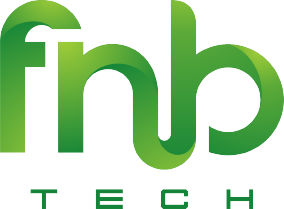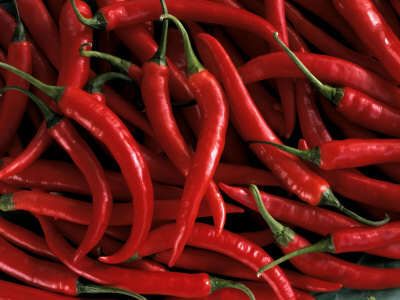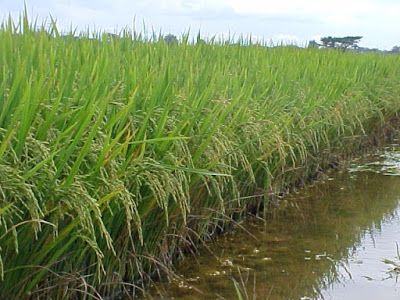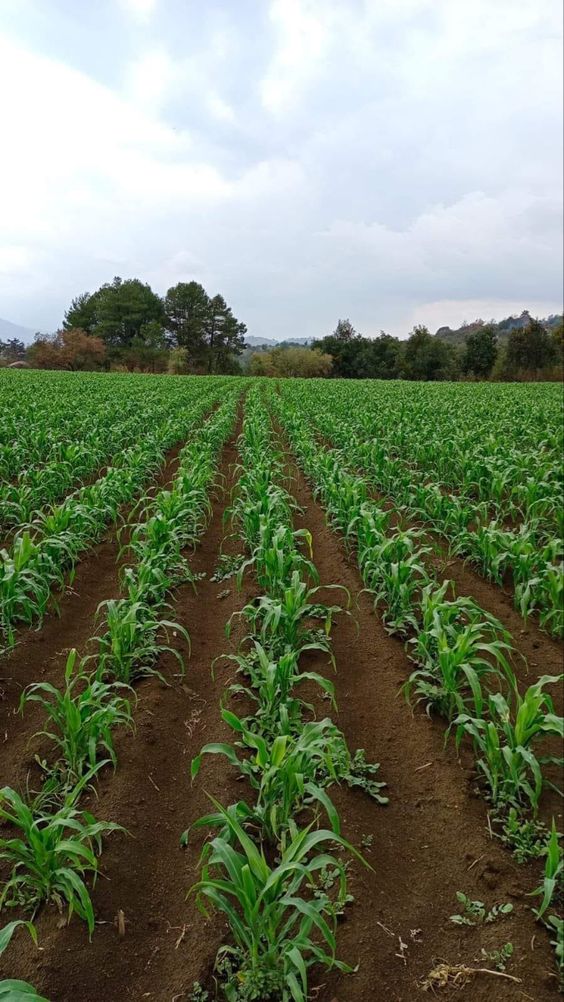Chili Harvesting: Maximizing Efficiency with Smart Agriculture
Chili Harvesting, an essential crop in the global agricultural landscape, plays a pivotal role in culinary traditions, food security, and the economy. However, the challenges associated with traditional chili harvesting, such as labor shortages, climate variability, and inefficiencies in resource management, necessitate a shift towards more advanced methods. Smart Agriculture, characterized by the use of digital tools and technologies, offers a transformative approach to chili harvesting. By leveraging precision farming, IoT, AI, and data analytics, Smart Agriculture enhances the efficiency, quality, and sustainability of chili production. This article delves into the integration of Smart Agriculture in chili harvesting, exploring its benefits, objectives, technologies, and broader implications for the agricultural sector.
Contents
- 1 The Role of Smart Agriculture in Chili Harvesting
- 2 Benefits of Smart Agriculture in Chili Harvesting
- 3 Objectives of Implementing Smart Agriculture in Chili Harvesting
- 4 Explanation of Smart Agriculture Technologies in Chili Harvesting
- 5 Advantages of Adopting Smart Agriculture in Chili Harvesting
- 6 Usefulness of Smart Agriculture in Chili Harvesting
- 7 Challenges and Solutions in Implementing Smart Agriculture in Chili Harvesting
The Role of Smart Agriculture in Chili Harvesting
Smart Agriculture represents a paradigm shift in agricultural practices, where technology plays a central role in enhancing productivity, optimizing resources, and promoting sustainability. In chili harvesting, the application of Smart Agriculture can revolutionize traditional methods by providing real-time data, automating labor-intensive processes, and improving decision-making accuracy.
Precision Farming: Precision farming is at the heart of Smart Agriculture, involving the use of GPS, sensors, and drones to monitor and manage crops at a micro level. In chili farming, precision farming enables farmers to assess critical factors such as soil health, moisture levels, and nutrient availability with pinpoint accuracy. For example, drones equipped with multispectral cameras can capture high-resolution images of chili fields, allowing farmers to detect variations in plant health and respond promptly. This data-driven approach ensures that chili plants receive the optimal conditions for growth, resulting in a more uniform and higher-quality harvest.
IoT Integration: The Internet of Things (IoT) facilitates seamless communication between various devices and systems on the farm. In the context of chili harvesting, IoT devices such as soil moisture sensors, weather stations, and automated irrigation systems work together to provide a comprehensive view of the farm’s environment. These devices continuously collect data on soil conditions, temperature, humidity, and other factors that influence chili growth. By analyzing this data, farmers can make informed decisions about when to water, fertilize, or harvest their crops. IoT integration also allows for remote monitoring and control, enabling farmers to manage their chili fields from anywhere, at any time.
AI and Machine Learning: Artificial Intelligence (AI) and machine learning are powerful tools in Smart Agriculture, capable of processing vast amounts of data to generate actionable insights. In chili harvesting, AI algorithms can analyze historical and real-time data to predict the optimal harvest time, taking into account factors such as weather patterns, soil conditions, and plant growth stages. Machine learning models can also identify trends and anomalies, helping farmers anticipate potential issues such as pest infestations or nutrient deficiencies. By using AI-driven decision support systems, farmers can optimize their chili harvesting strategies, maximizing yield and minimizing losses.

Benefits of Smart Agriculture in Chili Harvesting
The adoption of Smart Agriculture in chili harvesting brings a multitude of benefits, ranging from increased productivity and quality to enhanced sustainability and cost-effectiveness.
Increased Yield and Quality: One of the primary benefits of Smart Agriculture is its ability to boost both yield and quality. By providing precise control over the growing conditions, Smart Agriculture ensures that chili plants develop uniformly and reach their full potential. For instance, precision irrigation systems deliver the exact amount of water needed by the plants, preventing water stress and promoting healthy growth. Similarly, automated nutrient management systems ensure that chili plants receive the right balance of nutrients, resulting in higher-quality fruits with improved flavor, color, and shelf life.
Labor Efficiency: Traditional chili harvesting is labor-intensive, requiring significant manpower to manually pick and process the chilies. Smart Agriculture addresses this challenge by introducing automation and mechanization into the harvesting process. Robotic harvesters, guided by AI and machine vision, can identify ripe chilies and pick them with precision, reducing the need for manual labor. These machines can operate continuously, day and night, significantly increasing the efficiency of the harvesting process. Moreover, the use of automated systems reduces the physical strain on farm workers, improving their overall well-being and productivity.
Sustainability: Smart Agriculture promotes environmentally sustainable practices by optimizing resource use and minimizing waste. In chili farming, the precise application of water, fertilizers, and pesticides reduces the environmental footprint of the farm. For example, precision irrigation systems ensure that water is applied only where and when it is needed, reducing water wastage and preventing soil erosion. Similarly, the targeted application of fertilizers and pesticides minimizes chemical runoff, protecting surrounding ecosystems and preserving soil health. By adopting sustainable practices, farmers can contribute to the conservation of natural resources and the reduction of greenhouse gas emissions.
Cost-Effectiveness: While the initial investment in Smart Agriculture technologies may be substantial, the long-term benefits far outweigh the costs. Increased yields, reduced labor expenses, and lower resource consumption contribute to higher profit margins for chili farmers. For example, the use of automated irrigation and nutrient management systems can reduce input costs by optimizing the use of water and fertilizers. Similarly, the adoption of robotic harvesters can lower labor costs by reducing the need for manual labor. Over time, these cost savings can make Smart Agriculture a financially viable and profitable approach to chili farming.
Objectives of Implementing Smart Agriculture in Chili Harvesting
The integration of Smart Agriculture into chili harvesting is driven by several key objectives, all aimed at improving productivity, quality, and sustainability in the farming sector.
Enhancing Productivity: One of the primary objectives of Smart Agriculture is to enhance the productivity of chili farming by optimizing the use of resources and improving crop management. By leveraging data-driven techniques, farmers can monitor the growth and development of chili plants more effectively, ensuring that they receive the necessary care at each stage of their lifecycle. This involves optimizing planting schedules, improving irrigation and nutrient management, and ensuring that chilies are harvested at the peak of their ripeness. The result is a significant increase in both the quantity and quality of the harvest, leading to higher yields and greater profitability.
Improving Product Quality: Another key objective of Smart Agriculture is to improve the quality of chili products by closely monitoring and controlling the factors that influence growth. By using precision farming techniques, farmers can ensure that chili plants receive the optimal conditions for growth, resulting in fruits that are uniform in size, color, and flavor. This consistency in product quality is essential for meeting market demands and ensuring customer satisfaction. Additionally, the use of Smart Agriculture technologies can help farmers produce chilies with enhanced nutritional value, longer shelf life, and greater resistance to pests and diseases.
Promoting Sustainable Farming: Sustainability is a central objective of Smart Agriculture, with a focus on reducing the environmental impact of farming practices. In chili harvesting, this involves the efficient use of resources such as water, fertilizers, and pesticides, as well as the adoption of practices that minimize soil degradation and protect biodiversity. By promoting sustainable farming practices, Smart Agriculture helps farmers reduce their carbon footprint, conserve natural resources, and contribute to the long-term health of the environment. This not only benefits the planet but also enhances the resilience of chili farming operations in the face of climate change and other challenges.
Supporting Decision-Making: Smart Agriculture provides farmers with the tools and data they need to make informed decisions about their farming practices. By collecting and analyzing data on crop health, soil conditions, weather patterns, and other factors, Smart Agriculture technologies help farmers identify potential issues and take corrective action before they impact the harvest. This data-driven approach to decision-making reduces the risks associated with chili farming and enables farmers to optimize their operations for maximum efficiency and profitability. Additionally, the use of predictive analytics and machine learning models can help farmers anticipate future trends and make proactive decisions that ensure the long-term success of their chili farming operations.

Explanation of Smart Agriculture Technologies in Chili Harvesting
The successful implementation of Smart Agriculture in chili harvesting relies on a combination of advanced technologies that work together to optimize the entire farming process. Each technology plays a specific role in enhancing productivity, efficiency, and sustainability.
Drones and Aerial Imaging: Drones equipped with high-resolution cameras and multispectral sensors are invaluable tools in Smart Agriculture. In chili harvesting, drones are used to capture detailed images of the fields, providing farmers with valuable insights into crop health, soil conditions, and potential pest infestations. By analyzing these images, farmers can identify areas of the field that require attention, such as regions with nutrient deficiencies or water stress. Drones can also be used to monitor the progress of the chili plants throughout the growing season, helping farmers make informed decisions about when to apply fertilizers, irrigate, or harvest.
Soil Sensors: Soil sensors are critical components of Smart Agriculture, providing real-time data on various soil parameters, including moisture content, pH levels, and nutrient concentrations. In chili farming, soil sensors are used to monitor the health of the soil and ensure that it provides the optimal conditions for chili growth. For example, soil moisture sensors can help farmers determine when and how much to irrigate, preventing overwatering or underwatering.
Automated Harvesters: Robotic harvesters are a game-changing technology in Smart Agriculture, offering a more efficient and precise alternative to manual harvesting. In chili farming, automated harvesters equipped with AI and machine vision can identify ripe chilies and pick them with precision, reducing the risk of damage to the fruits. These machines can operate continuously, increasing the speed and efficiency of the harvesting process and reducing the time it takes to bring the chilies from the field to the market. Additionally, automated harvesters can be programmed to work in specific patterns, ensuring that all ripe chilies are harvested at the right time and minimizing losses due to overripe or underripe fruits.
Climate Monitoring Systems: Climate monitoring systems are essential for managing the environmental factors that impact chili farming. These systems use sensors and weather stations to collect data on temperature, humidity, wind speed, and other climatic conditions that affect chili growth. By analyzing this data, farmers can make informed decisions about when to plant, irrigate, and harvest their crops. For example, if a climate monitoring system detects an approaching frost, farmers can take preventive measures, such as covering the chili plants or adjusting irrigation schedules, to protect the crop from damage. Similarly, if the system detects a period of high humidity, farmers can adjust their practices to prevent the spread of fungal diseases that thrive in moist conditions.
Data Analytics and Machine Learning: The vast amounts of data generated by Smart Agriculture technologies are only valuable if they can be effectively analyzed and used to make decisions. Data analytics and machine learning play a crucial role in turning raw data into actionable insights. In chili harvesting, data analytics tools can process data from drones, soil sensors, climate monitoring systems, and other sources to provide farmers with a comprehensive view of their operations.
Advantages of Adopting Smart Agriculture in Chili Harvesting
The adoption of Smart Agriculture in chili harvesting offers numerous advantages, making it a valuable investment for farmers seeking to improve their productivity, sustainability, and profitability.
Scalability: Smart Agriculture technologies are highly scalable, making them suitable for both small-scale and large-scale chili farming operations. Whether a farmer is managing a few acres or hundreds of acres of chili fields, Smart Agriculture tools can be customized to meet the specific needs of the operation. For example, small-scale farmers can use drones and soil sensors to monitor their fields, while large-scale farmers can benefit from automated harvesters and advanced data analytics platforms. This scalability ensures that farmers of all sizes can take advantage of the benefits of Smart Agriculture, improving their competitiveness in the market.
Resource Efficiency: Smart Agriculture enables farmers to use resources more efficiently, reducing waste and lowering production costs. In chili harvesting, this means applying water, fertilizers, and pesticides only when and where they are needed, based on real-time data and precise measurements. For example, precision irrigation systems can reduce water usage by delivering the exact amount of water required by the chili plants, preventing overwatering and reducing water waste. Similarly, the targeted application of fertilizers and pesticides reduces the amount of chemicals used, lowering input costs and minimizing the environmental impact of farming practices.
Market Competitiveness: The adoption of Smart Agriculture technologies can enhance the market competitiveness of chili farmers by improving the quality and consistency of their products. By using precision farming techniques, farmers can produce chilies that meet the high standards of the global market, with uniform size, color, and flavor. Additionally, the ability to monitor and manage the entire farming process in real-time allows farmers to respond quickly to changes in market demand, ensuring that they can supply high-quality chilies when and where they are needed. This increased competitiveness can lead to higher prices for their products and greater access to premium markets.
Environmental Impact: Smart Agriculture promotes environmentally sustainable practices that reduce the impact of chili farming on the environment. By optimizing resource use, minimizing waste, and protecting soil health, Smart Agriculture helps farmers reduce their carbon footprint and contribute to the conservation of natural resources. For example, the use of precision irrigation systems reduces water usage, while the targeted application of fertilizers and pesticides minimizes chemical runoff and protects surrounding ecosystems. By adopting these sustainable practices, chili farmers can contribute to the long-term health of the environment and ensure the sustainability of their operations.
Usefulness of Smart Agriculture in Chili Harvesting
The usefulness of Smart Agriculture in chili harvesting extends beyond immediate productivity gains, offering long-term benefits for farmers, consumers, and the environment.
Enhanced Crop Monitoring: One of the key advantages of Smart Agriculture is the ability to monitor chili crops in real-time, providing farmers with valuable insights into plant health, growth stages, and environmental conditions. By using drones, soil sensors, and climate monitoring systems, farmers can track the progress of their chili crops throughout the growing season, identifying any issues that need to be addressed. This real-time monitoring allows farmers to make informed decisions about when to apply fertilizers, irrigate, or harvest their crops, ensuring that they achieve the best possible results.
Data-Driven Decisions: Smart Agriculture empowers farmers to make data-driven decisions that optimize their chili farming operations. By collecting and analyzing data from multiple sources, farmers can identify trends, predict outcomes, and adjust their practices to maximize yield and quality. For example, by analyzing data on soil conditions, weather patterns, and past harvests, farmers can determine the optimal time to plant and harvest their chili crops. This data-driven approach reduces the risks associated with farming and increases the likelihood of success.
Climate Adaptation: Climate change poses significant challenges to chili farming, with unpredictable weather patterns and extreme events threatening crop yields. Smart Agriculture provides farmers with the tools they need to adapt to these challenges and build resilience into their operations. By using climate monitoring systems and predictive analytics, farmers can anticipate and respond to changes in weather conditions, such as droughts, floods, or frosts. This ability to adapt to climate variability ensures that chili farming remains viable and productive in the face of changing environmental conditions.
Challenges and Solutions in Implementing Smart Agriculture in Chili Harvesting
Chili Harvesting,While the benefits of Smart Agriculture in chili harvesting are clear, there are also challenges that need to be addressed to ensure its successful implementation.
Technology Adoption: Chili Harvesting,One of the main challenges is the adoption of Smart Agriculture technologies by chili farmers, particularly those in developing regions. The initial cost of purchasing and installing these technologies can be prohibitive, especially for small-scale farmers. Additionally, there may be a lack of technical knowledge and skills required to operate and maintain the equipment. To overcome these challenges, it is essential to provide farmers with access to affordable financing options, as well as training and support programs that help them learn how to use Smart Agriculture technologies effectively.
Infrastructure Development: Chili Harvesting,The successful implementation of Smart Agriculture requires robust infrastructure, including reliable internet connectivity, power supply, and transportation networks. In many rural areas, this infrastructure may be lacking or inadequate, making it difficult for farmers to fully utilize Smart Agriculture technologies. Governments and private sector organizations need to invest in the development of rural infrastructure, ensuring that farmers have access to the resources they need to implement Smart Agriculture on their farms.
Training and Education: Chili Harvesting,The effective use of Smart Agriculture technologies requires a certain level of technical expertise, which may be lacking among chili farmers. To address this challenge, it is important to provide farmers with access to training and education programs that teach them how to use these technologies effectively. These programs should be tailored to the specific needs of chili farmers and delivered in a way that is accessible and easy to understand.
Data Security and Privacy: Chili Harvesting,The use of Smart Agriculture technologies involves the collection and storage of large amounts of data, raising concerns about data security and privacy. Farmers need to be confident that their data is being handled securely and that their privacy is being protected. To address these concerns, it is important to establish clear guidelines and regulations around data security and privacy in Smart Agriculture, ensuring that farmers have control over their data and that it is used in a way that benefits them.
Chili Harvesting,The integration of Smart Agriculture into chili harvesting offers a promising solution to the challenges faced by traditional farming methods. By leveraging advanced technologies such as precision farming, IoT, AI, and data analytics, Smart Agriculture enhances the efficiency, productivity, and sustainability of chili farming operations. The benefits of Smart Agriculture extend beyond immediate gains in yield and quality, offering long-term advantages for farmers, consumers, and the environment. However, to fully realize the potential of Smart Agriculture, it is essential to address the challenges associated with technology adoption, infrastructure development, training and education, and data security. With the right support and investment, Smart Agriculture can transform chili harvesting and contribute to a more sustainable and profitable agricultural sector.




